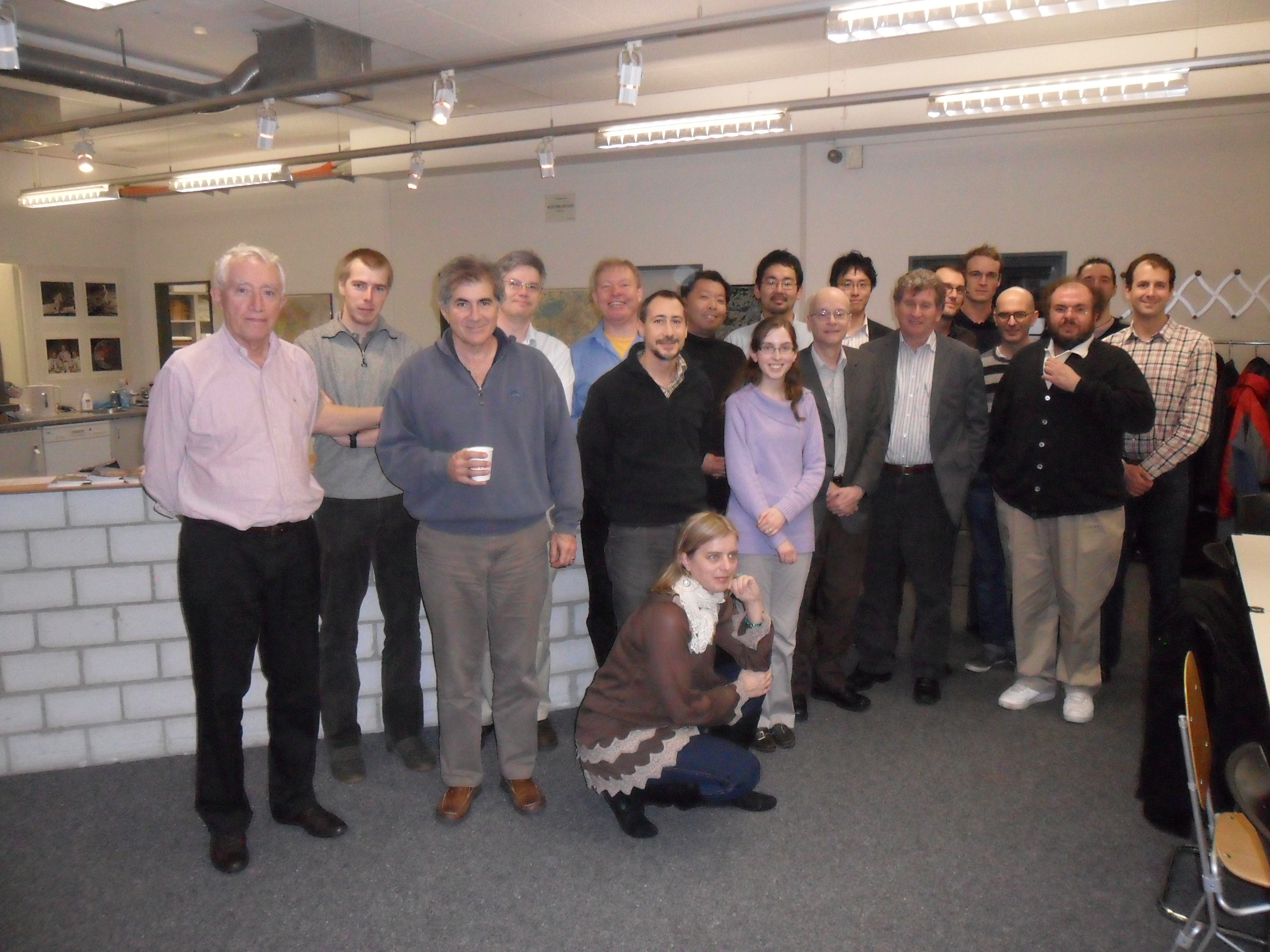|
Our first meeting served to discuss modelling techniques and case studies that would be pursued by the group. The main 3D full PIC modelling tools at our disposal are:
SPIS, an electrostatic open source code developed under the auspices of the European Space Agency. SPIS uses unstructured grids with tetrahedral elements. It comes with an advanced GUI that allows the user to construct a full project, from the construction of a geometry and mesh, simulation runs, to results analysis. It can model most material interactions with space environment, and surface potential evolution. Documentation and software download are available at http://dev.spis.org/projects/spine/home/spis
EMSES, developed in Japan, is a fully electromagnetic model. EMSES uses a regular Cartesian grid but it has the capability of representing objects and boundaries with complex shapes. The main computational engine of the code is written in FORTRAN 90, combined with a dynamic load balancer written in C to make use of large scale parallel computers. The numerical approach used in this model is described in Phys. of Plasmas Vol. 16, 062904 (2009); doi:10.1063/1.3147922.
IPIC3D is written in C++, fully parallelized (with MPI) to make use of massive parallel computers. It uses a uniform Cartesian grid, but it can also represent domains and boundaries with complex geometrical shapes. IPIC3D is also implicit and fully electromagnetic. A description of the code is given in Mathathematics and Computers in Simulation, Vol. 80 pp. 1509-19 (2010).
PTetra, an electrostatic model based on unstructured tetrahedral grids capable of representing complex geometries. The code is written in FORTRAN 90 and it is parallelised using MPI so as to run on several (12-24) processors on commodity-based clusters. A description of the numerical approach is given in an article to be published in IEEE Trans. Plasma Science.
Several possible case studies were presented and discussed. The ones that were selected for further consideration include:
Wake physics with Solar Probe Plus, Solar Orbiter, DEMETER and Rosetta (in the solar wind).
Physics of probes, and potential at electric field probes.
Well diagnosed laboratory experiments.
| 
